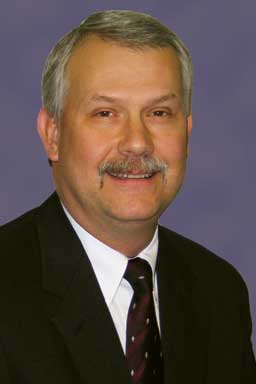From the Executive Director: A gathering storm
Since early December of last year, Iowa and much of the Midwest have been buffeted by three different winter storms. Snow, below-zero temperatures, and blustery winds have been the norm so far this winter. With today’s forecasting tools, the weather people have a heyday in preparing people for days before the storm arrives. It is very typical for the local grocery stores to do great business right before a predicted storm arrives. I listen to the forecasts, but I am also one who likes to scan the horizon for the gathering storm. I like to see it for myself to truly appreciate its imminent arrival.
There is another storm gathering on a different horizon. This one has the potential to affect the use of antimicrobials in the pork industry. For decades there has been criticism of the use of antimicrobials in food animals. Recently, however, I have begun to see an increasing intensity and breadth of the opposition to these uses. When this opposition is combined with sensitized legislative bodies, media coverage that tends to sensationalize, and a federal agency (Food and Drug Administration; FDA) in transition, I fear that we may be facing an uncertain future when it comes to antimicrobials.
For many years, the AASV has spent a great deal of time and effort on this issue. We have consistently advocated for science to be utilized in assessing the risk before any actions are taken. We have argued that outright bans of uses of antimicrobials bring unintended consequences affecting animal health and wellbeing. We have worked to educate veterinarians and farmers on the judicious use of antimicrobials. We have partnered in broad coalitions with other organizations, such as the National Pork Board, National Pork Producers Council, American Association of Bovine Practitioners, American Association of Avian Pathologists, and American Veterinary Medical Association.
Despite our best efforts, they may not be enough to forestall actions which will curtail the legal uses of antimicrobials in food animals. Under the most scrutiny is the use of antimicrobials to increase the rate of weight gain and improve feed efficiency. These uses have been mischaracterized as “sub-therapeutic.” Unfortunately, this term has no regulatory meaning, nor has it been adequately defined by those throwing it around during outcries to ban such uses. By deliberately leaving it undefined, those opposed to animal agriculture can conveniently include other uses, such as control and prevention. Some activists have gone as far as suggesting bans of antimicrobials which are used to treat animals via drinking water.
The extreme fringe of those opposed to animal agriculture wants antimicrobial use limited to individual animal treatment only when the animal is clinically ill. They would ban all antimicrobials in feed and water, leaving only injectable and oral (drench) solutions for use on the farm. I do not see this scenario as very likely, but it remains a possibility. More likely is action, either legislative through Congress or regulatory through the FDA, to remove growth-promotion and feed-efficiency claims. Certain FDA officials have expressed their views that any risk from these uses is too much. Their candid and public expression of these views (reminiscent of the dreaded precautionary principle) leads me to the conclusion that the threat is real and perhaps imminent. How imminent and what we can do become important considerations for veterinarians.
Unfortunately, I do not have any prophetic powers to estimate when (or even if) action may be taken against the use of antimicrobials in food animals. It would, however, be naive to ignore the signs of potential challenges. If you have not already done so, please consider a future with no approved uses of antimicrobials for growth promotion and improved feed efficiency. Perhaps even a future with no claims for control and prevention. Have that conversation with your clients to help them recognize the threats at hand and to prepare. Consider the tools that remain to ensure animal health and wellbeing.
Swine veterinarians are resourceful and resilient. Facing change and adapting is nothing new. Finding opportunities among challenges has been the rule, not the exception, over the last few years in the pork industry. It has been suggested by the FDA and others (including members of AASV) that increased oversight by veterinarians of antimicrobial use on the farm is needed. The current AASV position is that “judicious use requires the oversight of a veterinarian at some point in the decision-making process.” This position does not necessarily mean that all antimicrobials must be prescription or veterinary feed directives. It does mean that by virtue of education, training, and experience, veterinarians have value when decisions are being made to use antimicrobials.
The AASV will continue to be involved in the ongoing issues related to the use of antimicrobials. We remain steadfast in our commitment to advocate for science-based approaches to this issue. We also will continue to advocate on behalf of the best interests of our members and their clients and patients. How we do that depends on our members. We need your input and involvement as we prepare to weather this gathering storm.
— Tom Burkgren, DVM
